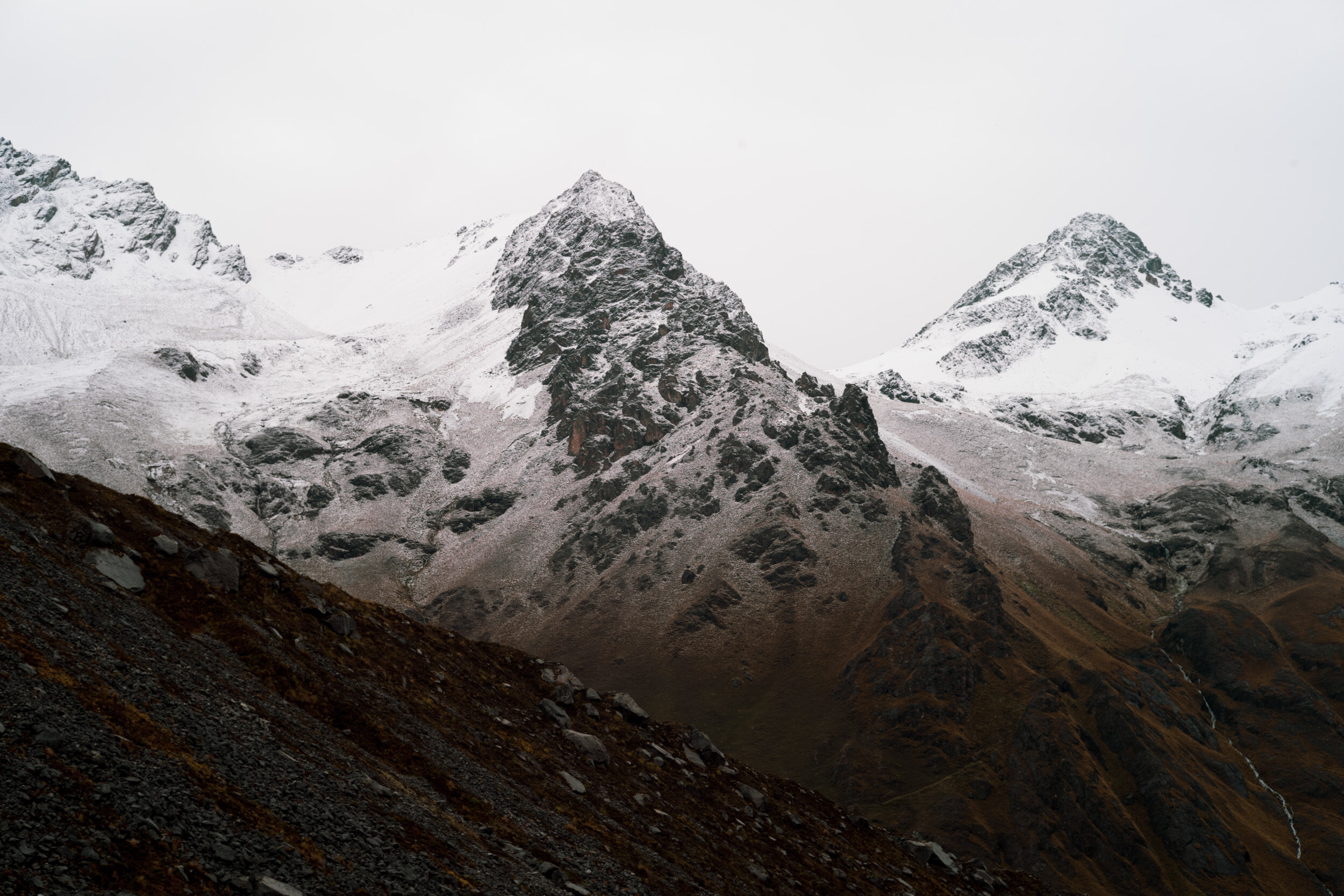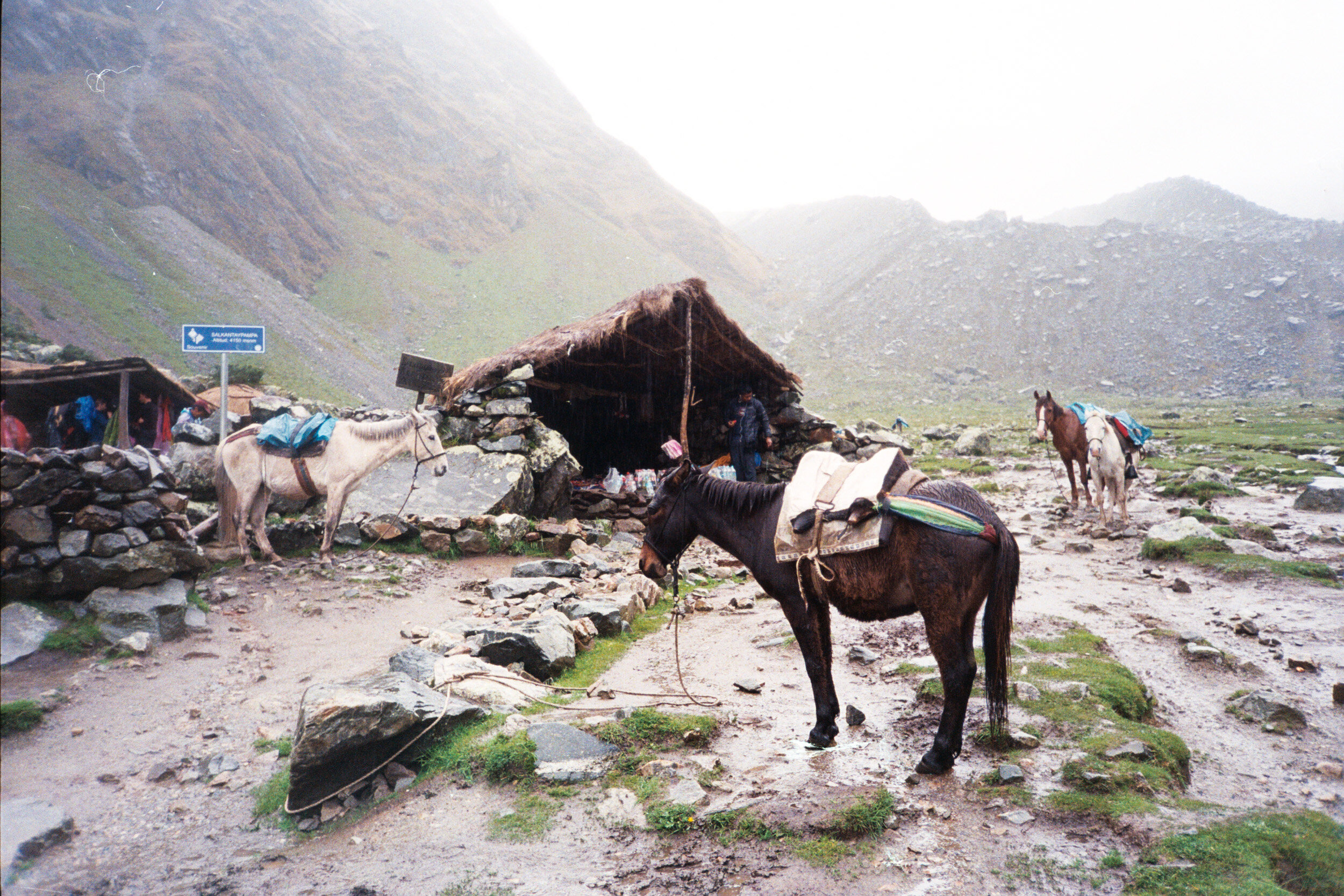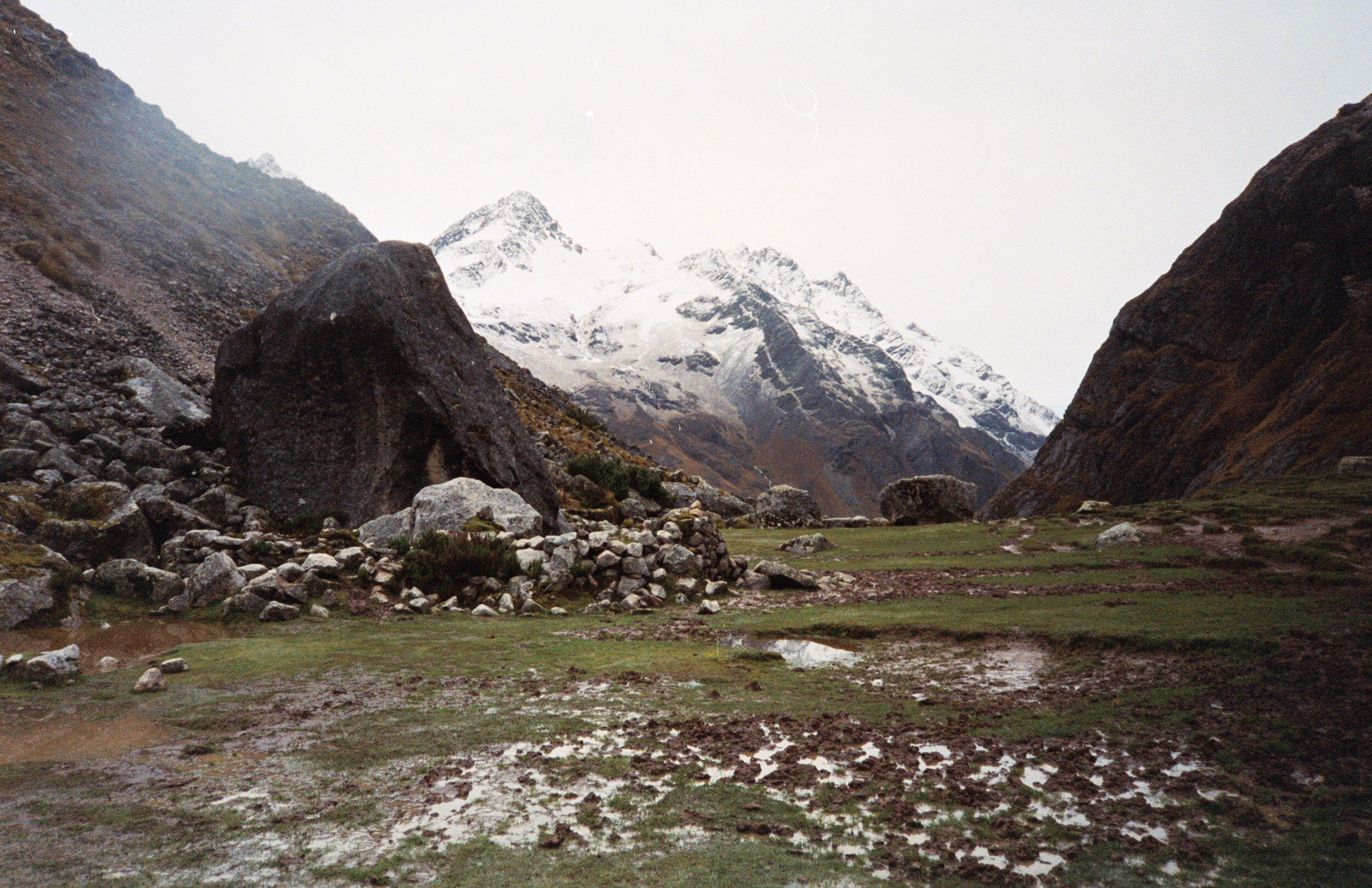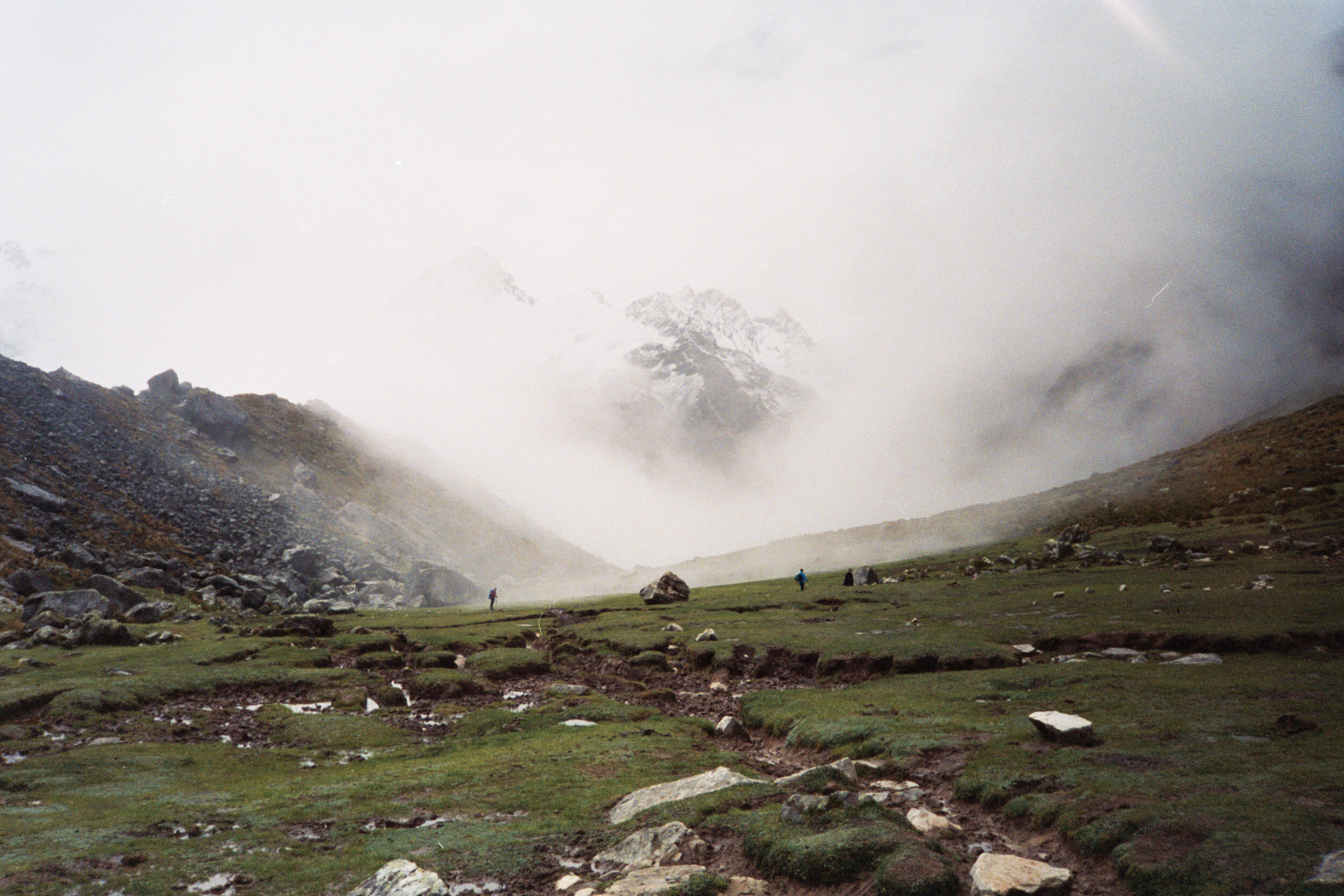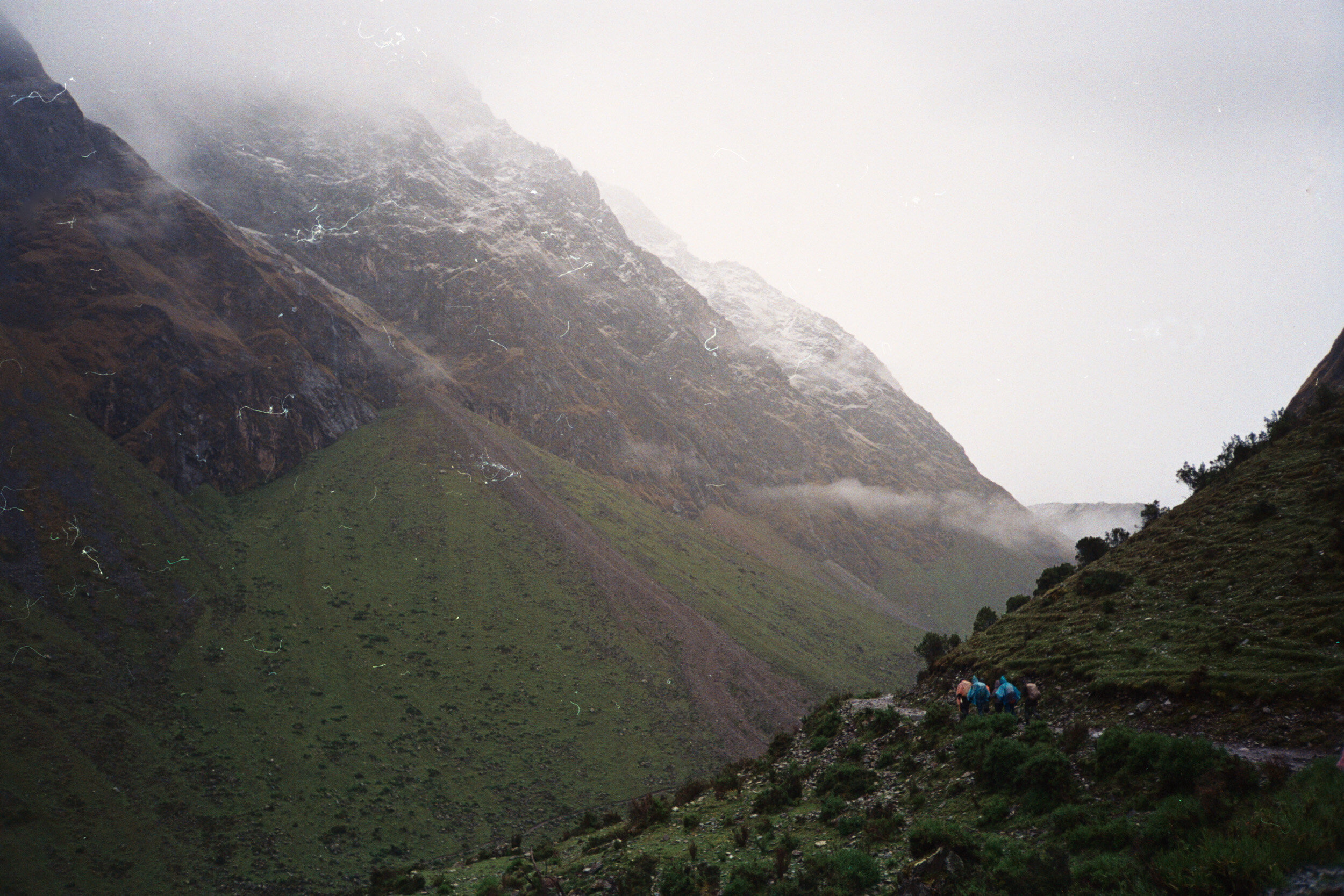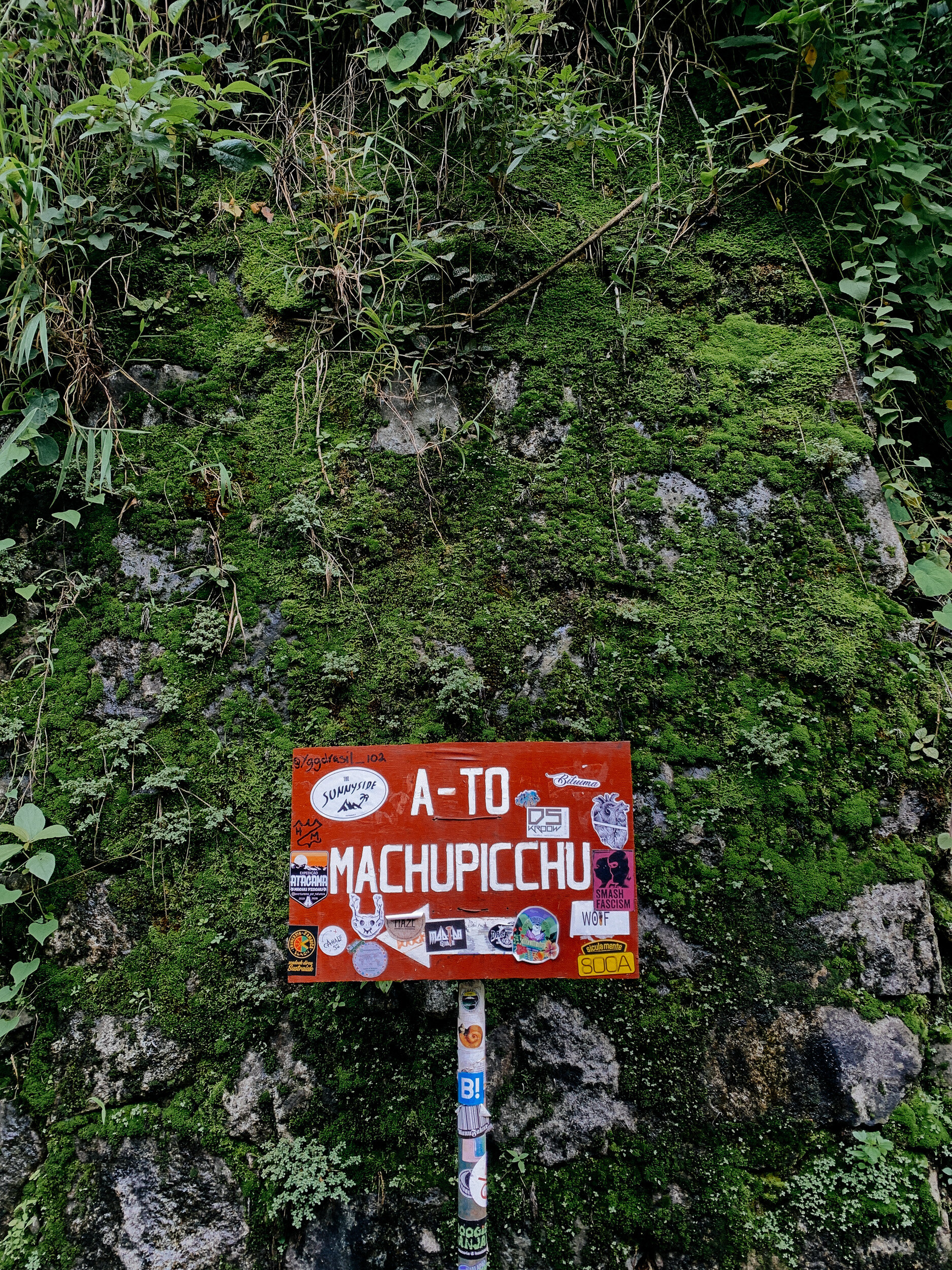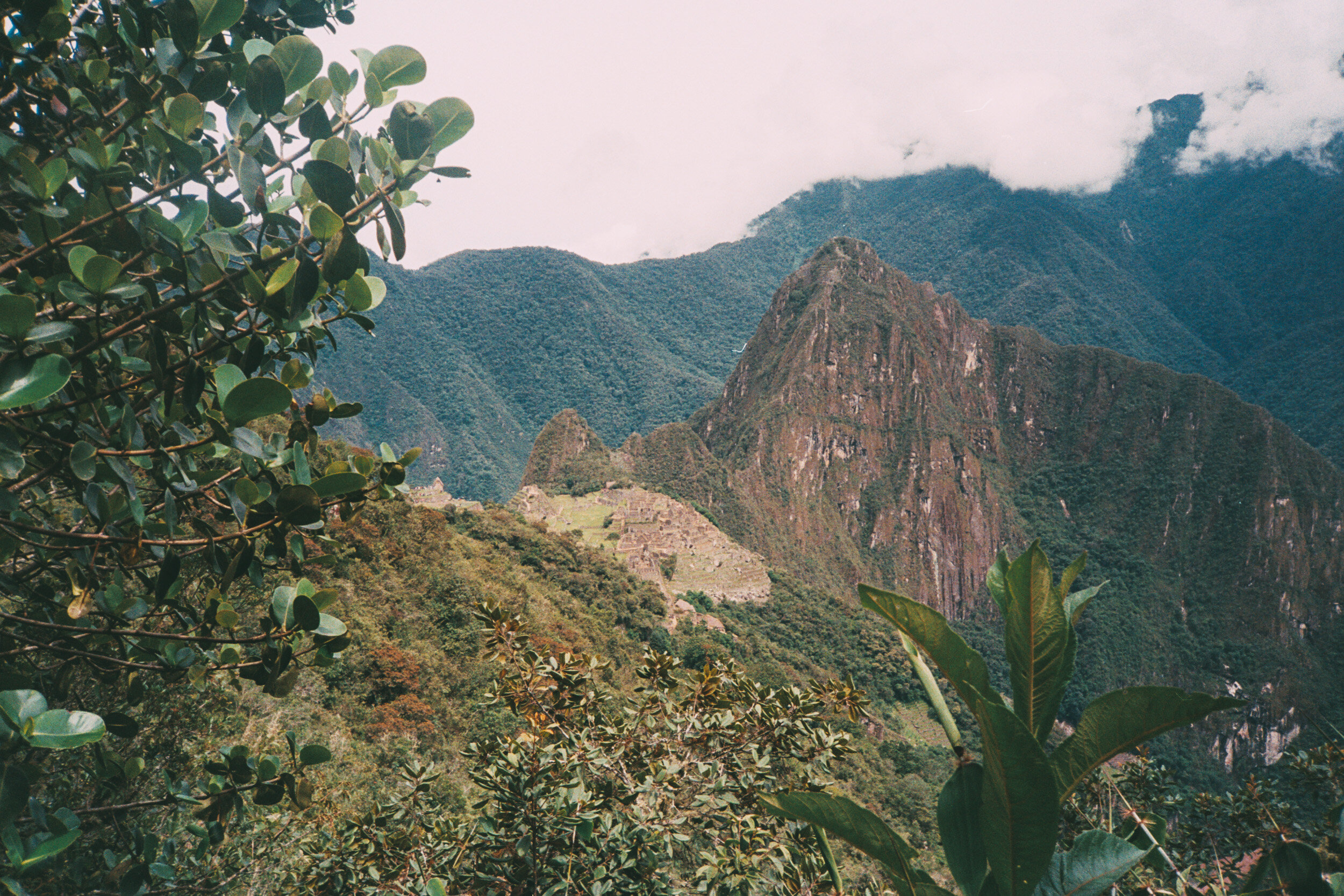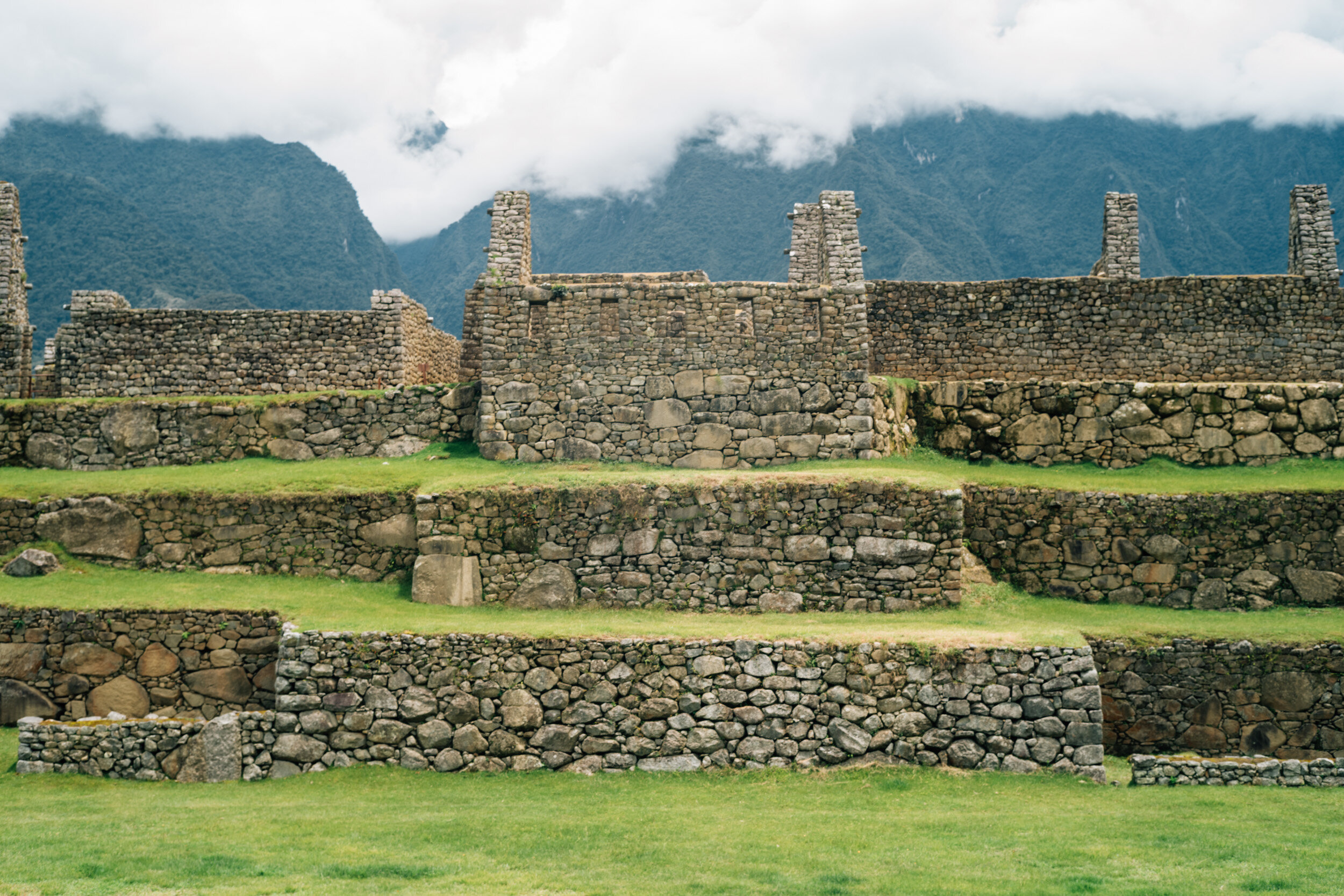The hardest hike to Machu Picchu; the Salkantay Trek
In Peru, there are several multi-day routes that you can hike to get to Machu Picchu… the Inca Trail being the one you may have heard about before. The Inca Trail follows a sacred trail blazed by the Inca people, over stone paths laid hundred of years ago through the Andes mountains. Unfortunately, the Inca Trail is so popular that reservations need to be made up to a year in advance if you want to hike it. Fortunately, there are several alternative trails you can hike to Machu Picchu, and the Salkantay Trek is one of them. This 4 or 5-day trail is the most difficult, but the trade-off is that you get to experience the wildest mountain scenery along the way. My decision to go to Peru was sort of last minute, after being invited to tag along with my friend Sally, who was having second thoughts about doing it as a solo trip. Sally planned her trip around doing the Salkantay Trek; and seeing photos of this epic hike was all the convincing I needed to book a flight to Peru!
The Salkantay Trek was the hardest hike I have ever done, and day two; hiking over Salkantay Pass, was by far the most physically demanding day of my life. Our days on the trail were made extra arduous, due to the fact that we were hiking in the off-season (December is one of the wettest months of the year). I had already gotten my feet (literally) wet with hiking in the rain; earlier last year in the Dolomites in June, and in Sweden in August. Prepared as I might have been for wet weather, and miles on the trail, I was hardly prepared for the seriously high altitude that we’d be hiking at. The trailhead was at around 12,000' feet elevation, and for the first two days we would only walk higher, and higher from there. I jump at the opportunity to challenge myself, but I’m not always so confident in my ability to overcome those challenges. In August I had managed to complete the Kungsleden Trail in Sweden, even though I had started it in pretty rough (emotional and physical) shape. Here I was in Peru; in somewhat better shape, and this time with the support of an organized group and guide… but with a tougher trek ahead of me.
DAY 1: to laguna humantay and sky camp
The first day of our Salkantay trek started with a 4am pick up from our hotel in Cusco. Due to a mix-up with my laundry at our hotel, I hadn’t managed to get to bed until after midnight, and then had anxiously laid awake for the few hours before my alarm went off at 3:30 am. A good nights rest is essential before a tough day of hiking, and I had not gotten one. I hoped to make up for lost sleep on the drive from Cusco to the trailhead, but the bumpy and winding roads made it difficult to fall asleep. After a stop for breakfast, our group was dropped off at the trailhead in Challacancha. My friend Sally and I would be hiking along with eight others; a couple from Brazil, a couple from Australia, a Turkish couple that was temporarily living in Philadelphia, and a young woman traveling solo from Argentina. Our group leader was Juan Felix (who goes just by Felix); a Peruvian Andean native, whose family lineage traces back to the Inca people.
The first mile of the trail was somewhat steep, we ascended 600 feet over the course of a mile. My leg muscles burned with every step… I felt like I was trying to drag them through wet cement. At 12,000’, there is much less oxygen to replenish your muscles (13% oxygen in the air vs. the 21% I’m accustomed to living sea level). In addition to the low oxygen, I was really feeling the lack of sleep… energy-wise I was running on empty. After the first mile the trail leveled out, and we walked for several miles on a trail that followed an irrigation waterway that had been created by the Incas. The weather was very fresh and damp, and heavy clouds obscured most views of the surrounding mountains. Felix pointed out various native plants and flowers along our walk, and explained how the Andean natives used them for many purposes. It was very interesting to learn how plants, animals, and people have been able to adapt and thrive at these high altitudes.
Within a couple of hours we reached our first stop; Soraypampa, where we stopped for lunch, and would later camp that night. Soraypampa is on the grid, and accessible by road, so the camp had many of the comforts of civilization; electricity, running water and flush toilets, and a kitchen of local cooks. For lunch we ate a family style feast of colorful Peruvian dishes; soup, pasta, trout stuffed with veggies and local cheese, an assortment of potatoes prepared in different ways (Peru has 3800 varieties of potatoes!), with coca tea, local juice infusions, and even dessert. Felix advised us not to over-stuff ourselves at mealtimes (which would be tough considering how delicious the food was)… at altitude, our digestive systems operate slowly, and too much food would slow us down— not to mention make us need to use the bathroom at inconvenient times on the trail.
After a short break to digest and unpack our things into our glass domes, our group reconvened for a hike up to Laguna Humantay. The lake was only about 1 mile up from our camp, but that mile required hiking up 1,300 feet to a lung-busting altitude of 14,000’. Getting up to Laguna Humantay was probably the slowest I’ve ever hiked… I don’t think I’d make it more than 30 feet before I’d have to stop to catch my breath and wait for the burning pain in my legs to subside. Most of our group was hiking at a much faster pace than me, probably because the majority of them were much younger (or more importantly, better rested than I was).
As I looked up to where we were hiking to, I would see the clouds roll in and out— at times completely obscuring the mountains, and at other times offering glimpses of these massive, snow and glacier speckled crags. As our luck would have it, but the time we reached the lake, it was completely socked in by clouds. The turquoise water was still a spectacular sight to see, but only the bottom of the massive mountains that rise out of the lake were visible. We waited, hoping that the clouds would pass… but after an hour of waiting the clouds did not budge, so we made our way back down to camp.
Dinner was another delicious feast, after which we turned in early for a night in our glass domes. Had the weather been clear, we would have been able to gaze up at the stars from our beds… but since it was cloudy and rainy, we instead watched the sparkling raindrops falling against the roof of our domes. I had really hoped to get a good nights sleep, but for a second night, I struggled to fall asleep. Despite having a warm sleeping bag and sleeping bag liner, I was very cold while trying to fall asleep. This is always an issue for me when camping, even with a warm sleeping bag, it just takes me a long time to warm up, usually several hours. Additionally, the altitude made it challenging to sleep, and I’m sure that my anxiety contributed as well— knowing that tomorrow would be the most difficult day on the trail.
The best hiking guide ever, Juan Felix
My dome-mate, Sally
“Sky camp”, the glass domes we slept in at Soraypampa.
Day 2: over Salkantay Pass to CHAULLAY
It rained all night, and in the morning the rain had not let up. I was hoping for dry weather as we hiked over Salkantay Pass, but the “Apus” (mountain gods) had other ideas. I anxiously ate my breakfast and packed up my bags. One major perk of being part of an organized trek was that we had porters and horses to handle and carry our bags, so we only needed to hike with the extra layers and snacks we’d need for the day.
Our group trudged along somewhat miserably in the rain. Most people wore only cheap plastic ponchos and basic (non-waterproof) athletic shoes. I came prepared in a durable rain shell, rain pants, waterproof boots, and a trekking umbrella.. but even the best rain gear in the world couldn’t get me up the hill faster than anybody else. I didn’t know before starting the trek that there would be the option to hire a horse to skip hiking the hardest segment of the trail up to Salkantay Pass. I came here to challenge myself, but with how weak and slow I’d been feeling after two nights of barely sleeping, I kept the option open in my mind that maybe I would take a horse if I really, really needed to.
We knocked out the first mile in 35 minutes, and the second mile in 35 minutes. The third, very steep mile took us over an hour, and when we reached the last stop to hire a horse, I walked right on past it. The fourth mile was not the steepest, but as we neared 15,000’ altitude, it was by far the hardest. Walking at 15,000’ did not feel like I expected it would. I assumed that hiking at high altitude would feel like trying to breathe with a plastic bag over your head… but in reality it just felt like being very, very out of shape. Almost everyone in our group was hiking at a faster pace than I was, with the exception of one guy who was struggling with mild altitude sickness; he seemed to have a headache and looked dizzy and confused. I was very thankful to just be struggling with the altitude, but not suffering from any real altitude sickness. As much as I dreaded this portion of the trail, being up in these mountains was what inspired me to come on this trip to Peru. Wanting to see Machu Picchu came second to my desire to be surrounded and in awe of these wild, glaciated Andean peaks.
The weather let up in the later morning, and it was dry as we pushed for the top of the pass. The weather was not entirely ideal for mountain-gazing, we would only see Salkantay mountain in bits as pieces, when the clouds would intermittently dissipate. Still, as I dragged myself up the last few steps to the top of the pass, I could feel how close I was to the largest mountain I had ever seen; a 20,574 foot high giant. The clouds made the landscape moody and dramatic, and I wasn’t entirely disappointed to be hiking in the rainy season.
We stopped at the top of Salkantay Pass for a break to rest and take in our surroundings. We learned about the origin of rock stacking; how Andean people for centuries have stacked rocks at high mountain passes as an offering of gratitude to the mountain gods, for allowing safe travel.
As soon as we crossed the pass and the trail started to descend, I felt like a brand new woman. Unlike hiking uphill, I am really fast downhill. Even at a quick pace, we still had to hike another 4-5 miles before we were able to stop for lunch. After a very well deserved, short stop just to eat lunch, we were back on the trail. We still had another 5 mile stretch to hike to camp, through light rain and very muddy trails that descended into the cloud forest.
Camp that night was in the village of Chaullay. We slept in little grass roofed huts, and the camp had the most luxurious reward after 14 miles of hiking– a shower! I slipped off my sweaty, soggy clothes, and enjoyed a hot rinse and cold beer before our next Peruvian feast. That night I slept better than the previous nights; we were at much lower altitude, 9,400’, where it wasn’t freezing cold and at last I could catch some zzzs.
DAY 3: to hot springs & AGUAS CALIENTES
We woke up to rain yet again… but since we were now down in cloud forest, it was more like tropical rain than freezing, hypothermic mountain rain. We walked on a gravel road that followed a raging river, where at points we had to cross sketchy landslides that had blocked the entire roadway. After several fast-paced miles of downhill hiking, my friend Sally’s knee issues started to flare up. Luckily, we didn’t have to hike for very much longer, before a driver with a van came to pick up our group. People in our group were doing two different hike itineraries (we would be hiking for four days, while some others were doing a longer, five day itinerary), so it was necessary to pick us up to take us to a spot in the jungle where we would have lunch, and the rest of the group would later be camping that night.
We had one of my favorite dishes for lunch; local trout ceviche. After being introduced to trout ceviche on this trek, I made it a point to order it at restaurants every time I saw it on the menu. After lunch we had the option to walk for quite a long distance to our hostel for the night, or to take the van to soak in some natural hot springs. The first leg of walking earlier in the day wasn’t terribly scenic (a lot of gravel roads), so it wasn’t a very hard decision to instead go to the hot springs!
The drive to the hot springs followed a very narrow road that ran alongside the wildly raging Urubamba River. In some places, the heavy seasonal rains had washed away large portions of the road, and the van’s tires would be just barely making contact with the edge of the road— inches from a steep drop off to the treacherous river below. The members of our group sitting on the left side of the van tried to avoid looking out their windows for the duration of the jaw-clenching 40 minute drive to the hot springs. We bonded as we nervously joked and laughed about how absurd it would be to “die to The Macarena”, one of the many obnoxious pop tunes that our driver had blasting through the van’s speakers.
The hot springs were a peaceful aquatic paradise, consisting of several large pools of sparkling clear blue water, landscaped thoughtfully into a lush cliffside in an unassuming location situated outside a small local community. The feeling of soaking in the springs was completely indescribable, I could feel all of the sweat and toil of the last few days melt away.
It was at the hot springs that we had to say goodbye to some of our new friends from our hiking group. A few of us had more hiking to do today (in order to get to the town of Aguas Calientes at the base of Machu Picchu tonight), whereas the rest of the group would spend another full day hiking tomorrow. It’s incredible how quickly a group of complete strangers can become friends; when you’re put together, struggling towards a common goal in the outdoors.
The home stretch was 7 miles of walking directly alongside the railroad tracks that connect the town of Aguas Calientes to the outside world (Aguas Calientes and Machu Picchu is not accessible by road, the only way in is by train or walking). After the wild scenery we had seen in the mountains, I didn’t expect to see much by walking along railroad tracks… at this point I just wanted to get to our hostel in town, and sleep in a real real bed. I was pleasantly surprised, and enjoyed nearly every minute of the railroad walk, which brought us through a tropical rainforest. The forest was alive with life; plants and birds and bugs… the raging Urubamba River, and other trekkers on the trail.
As we got closer to Machu Picchu, I started to see mountains above the trees. Shear granite cliffs, reminiscent of those I’ve seen in Yosemite (but covered with much more greenery), rose thousands of feet high. I started to have an idea of just how incredible Machu Picchu was going to be… an ancient city perched on top of one of these giants. For the first time I was really, really excited about Machu Picchu.
DAY 4: MACHU PICCHU!
In the morning we had to wake up super early, yet again. The first bus up to Machu Picchu leaves town at 6am, so we were in line before 5:30am. We kind of cheated and didn’t hike up— it would be a steep walk up the road for buses, which Felix discouraged (unless we wanted to wake up earlier, and arrive at Machu Picchu already out of energy, and drenched in sweat). Sally and I were so glad that we just took the bus, we were able to arrive to the front gates right before they opened, and made it into Machu Picchu in time to see the morning fog melt away.
This was the last of our time with our guide Felix, who gave us some in-depth history of Machu Picchu, before letting us explore on our own for the remainder of the morning. Over the course of the morning, the swarms of selfie-takers descended upon every ledge and lookout above the ruins… meanwhile I kept myself very occupied by trying to photograph the resident llamas.









